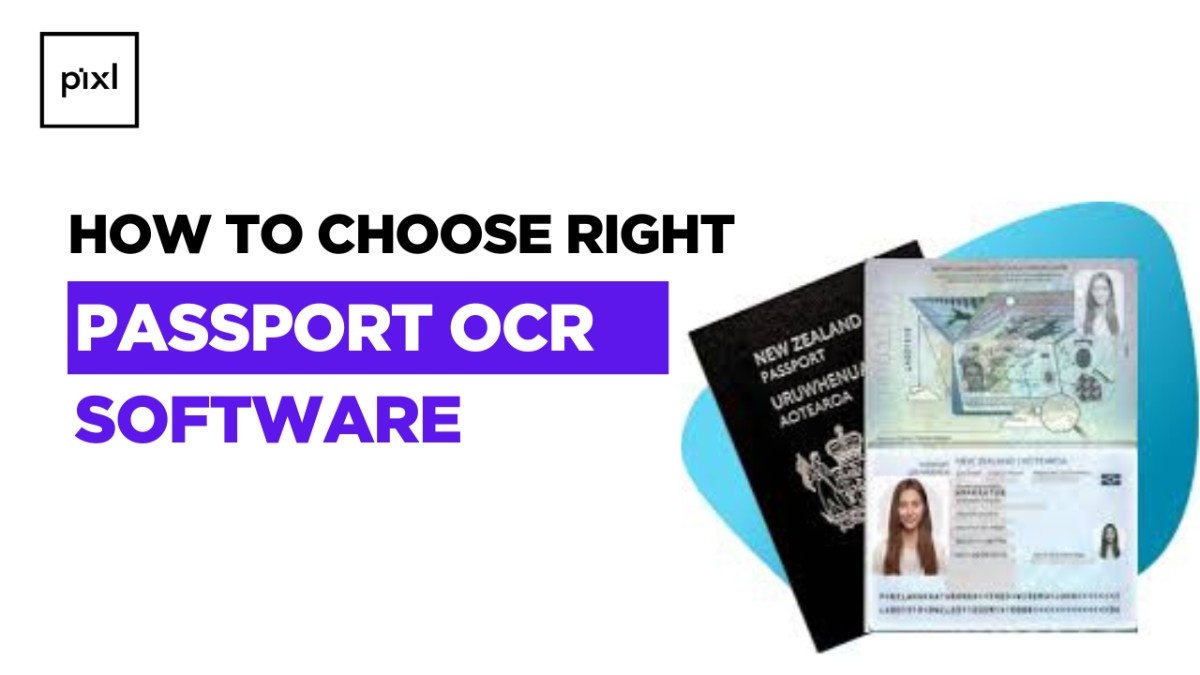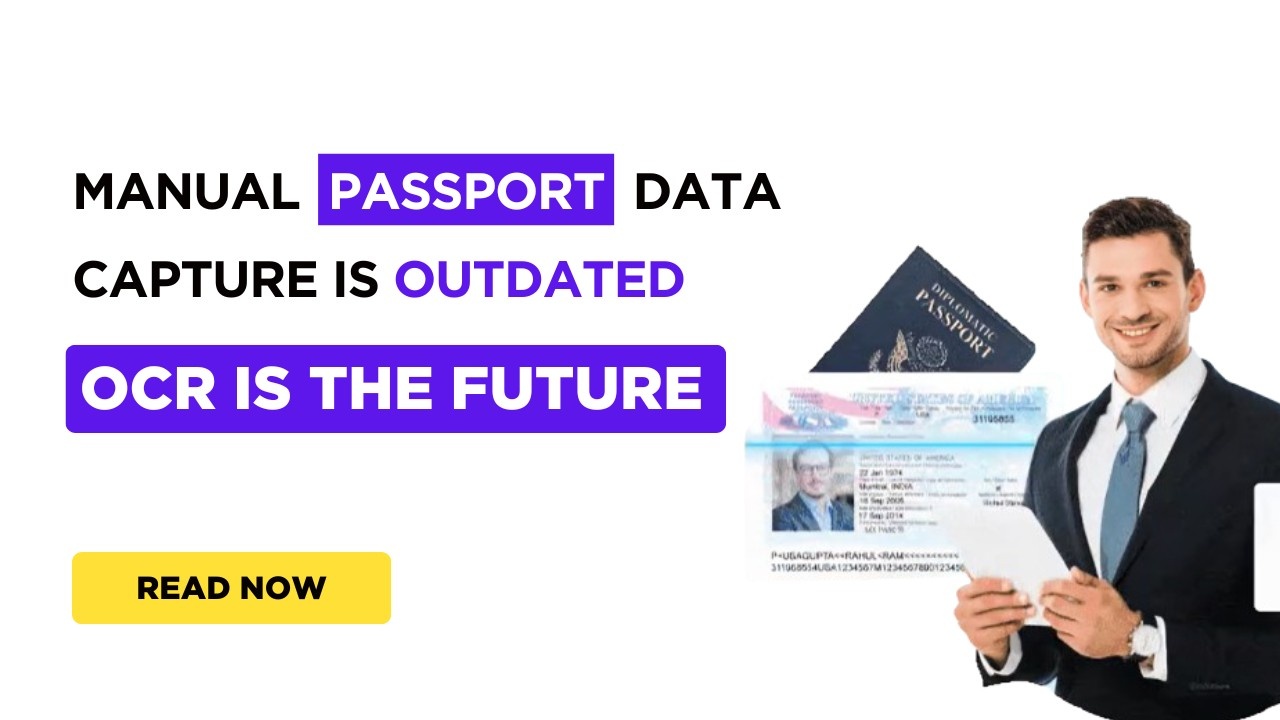In an increasingly digital world, businesses across sectors like banking, travel, immigration, and fintech rely heavily on passport-based identity verification. The key enabler of this process? Optical Character Recognition (OCR) software. But not all OCR solutions are created equal. Choosing the right Passport OCR software can determine whether your customer onboarding is seamless or frustrating.
This guide will walk you through the must-have features, benefits, and strategic advantages of selecting the right OCR software for passport Data Seamless Extraction. When done right, OCR passport processing ensures both speed and data reliability.
What is Passport OCR?
Passport OCR is an intelligent solution that electronically extracts text data from a scanned passport image, capturing details such as name, passport number, nationality, and date of birth—especially from the MRZ (Machine Readable Zone). By automating this process, it eliminates manual entry, improving both speed and accuracy.
Modern Passport OCR technology also integrates advanced features like image pre-processing, error detection, and compatibility with various passport formats, making it a core tool for digital onboarding, KYC, and identity verification.
Challenges with Manual Passport Data Capture
Manual data entry from passports are time-consuming, error-prone, and difficult to scale.
Common issues include:
- Low-quality scans or unclear images
- Human errors in transcription
- Inconsistency in document formats
- Discover more in our deep dive on Challenges with Manual Passport Data Capture
Features That Define the Best OCR Software for Passport Scanning
When evaluating a solution, the following features should be non-negotiable:
1. MRZ Code Scanning
MRZ scanning is the crucial feature in passport recognition software. It ensures efficient data extraction by capturing standard fields with high accuracy. The MRZ section contains structured data that’s critical for verifying identity in a globally accepted format. The best OCR for passport data extraction performs this task with superior accuracy.
2. NFC-based Passport Verification
Modern passports contain NFC chips with embedded identity data. A good OCR solution should integrate with NFC technology to ensure tamper-proof, rapid validation. This is part of what makes an AI-based OCR solution for passport so powerful.
3. High Accuracy in Text Recognition
The software should utilize advanced algorithms for text recognition software for passport processing. From blurry images to various lighting conditions, your solution must maintain accuracy under all conditions. This also contributes to effective OCR-based passport processing.
4. Document Capture OCR for Passports
Your OCR tool should support high-quality document image capture. Features like auto-cropping, glare detection, and edge detection enhance precision. This document capture OCR for passports improves overall reliability.
5. Real-Time Liveness & Fraud Detection
To prevent spoofing and ensure authenticity, the OCR software should include liveness checks, hologram detection, and watermark validation. This elevates your security standards and aligns with the best intelligent character recognition software for passport.
6. Global Document Compatibility
Choose OCR software passport processing that supports multilingual, multi-country passports. This is vital for scalability and global user onboarding. AI solutions with OCR in passport verification capabilities allow for high-volume, real-time processing.
Smart OCR for Passport Digitization
Unlike traditional OCR systems, smart OCR uses machine learning to adapt to document inconsistencies. Whether it’s identifying non-standard layouts or correcting skewed data, smart OCR for passport digitization makes the process resilient and future-proof. Smart OCR improves both accuracy and speed of passport digitization.
How OCR Enhances Passport Verification?
OCR in passport verification dramatically reduces processing time while ensuring that no field is missed or mistyped. Especially in high-volume environments like airports and digital banks, fast OCR software enables real-time identity confirmation. OCR data capture for passports supports efficient workflows and enhances user experience
Industry Use Cases
- Banking & Fintech: Accelerate eKYC with fast and reliable OCR-based passport processing.
- Travel & Hospitality: Enable smooth, contactless check-ins.
- Government & Immigration: Ensure secure, automated ID verification with minimal errors.
Why Passport OCR is Becoming Essential in Digital Onboarding?
In today’s digital-first world, onboarding new customers quickly and securely is critical. Passport OCR offers several key advantages:
Automated Data Extraction: Quickly captures identity information from passports without manual entry.
Reduced Errors: Minimizes mistakes that often occur with manual processing.
Regulatory Compliance: Ensures adherence to KYC and other identity verification standards.
Faster Onboarding: Speeds up customer onboarding, enhancing user experience.
The benefits of Passport OCR in digital onboarding make it an essential tool for banks, fintechs, travel companies, and government services.
Why AI Is the Future: Passport OCR Processing AI?
AI-powered passport OCR systems learn from real-world input, continuously improving field detection and recognition accuracy. This means fewer false positives, better fraud detection, and smarter data validation workflows. Pixl’s AI-based OCR solution for passport combines innovation with trust.
Final Thoughts: Choosing the Right Passport OCR Solution
Selecting the right Passport OCR solution, services, or software goes beyond just ticking feature checklists—it’s about building a fast, secure, and seamless identity verification ecosystem. Modern Passport OCR technology, combined with AI-powered processing, MRZ scanning, NFC-based verification, and smart fraud detection, ensures that businesses can scale operations while maintaining compliance and reliability.
Implementing the right Passport OCR solution delivers three significant effects:
-
Enhanced Operational Efficiency – Automates manual processes, reduces verification time, and accelerates customer onboarding.
-
Improved Data Accuracy and Security – Minimizes errors, ensures regulatory compliance, and strengthens fraud prevention measures.
-
Scalable Digital Onboarding – Supports high-volume, multi-country passport verification, enabling businesses in banking, fintech, travel, and government sectors to expand seamlessly.
By integrating a robust Passport OCR system, organizations not only streamline identity verification workflows but also future-proof their onboarding processes with cutting-edge AI and intelligent OCR capabilities.
With Pixl’s Passport OCR solutions, you get a comprehensive, intelligent, and reliable passport verification platform—designed to meet the evolving needs of digital-first industries.



